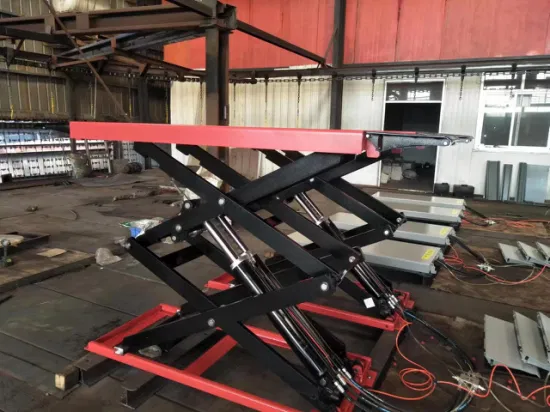The scherenaufzug, widely known in English as the scissor lift, is one of the most practical and efficient lifting solutions in modern industries. Its name comes from the distinctive design of the crossed steel arms that resemble the blades of a pair of scissors. When extended, they raise the platform; when retracted, they bring it back down.
From construction sites and warehouses to theaters and airports, the scherenaufzug has become indispensable. In this guide, we will explore its definition, working principle, types, benefits, applications, and safety measures.
What is a Scherenaufzug?
A scherenaufzug is a lifting platform designed to move vertically and raise workers, tools, or goods to a required height. Unlike cranes, which offer broad movement, or ladders, which can be unsafe, the scissor lift provides a stable working platform.
It is highly versatile and comes in stationary models for repeated use in one place, as well as mobile units equipped with wheels for flexible operations.
How Does a Scherenaufzug Work?
The functionality of a scherenaufzug lies in its mechanical system:
- Scissor Arms: Crossed beams create a zigzag or X-pattern.
- Platform: Positioned on top, it carries goods, tools, or workers.
- Base Frame: Provides stability and balance.
- Power Source: Operates hydraulically, electrically, pneumatically, or via diesel.
- Control Panel: Allows precise raising or lowering of the platform.
When pressure is applied (hydraulics, pneumatics, or motorized force), the arms expand, pushing the platform upward. To descend, the pressure is released, and the arms contract.
Types of Scherenaufzug
Different work environments demand different versions of the scherenaufzug.
1. Hydraulic Scherenaufzug
- Runs on hydraulic cylinders filled with pressurized fluid.
- Extremely strong and ideal for heavy loads.
- Commonly found in logistics and manufacturing industries.
2. Electric Scherenaufzug
- Powered by rechargeable batteries and electric motors.
- Environmentally friendly and emission-free.
- Perfect for indoor use such as malls or warehouses.
3. Diesel Scherenaufzug
- Uses diesel engines for power.
- Can handle rough terrain and reach higher elevations.
- Designed mainly for outdoor construction sites.
4. Pneumatic Scherenaufzug
- Works with compressed air.
- Clean and eco-friendly because it avoids hydraulic fluids.
- Often used in sensitive industries like food or pharmaceuticals.
5. Stationary vs. Mobile Scherenaufzug
- Stationary: Fixed in one place, useful for assembly lines or warehouses.
- Mobile: Mounted on wheels or tracks, easy to move across large areas.
6. Single, Double, and Triple Scherenaufzug
- Single: Basic design, moderate height.
- Double: Stacked mechanisms for medium heights.
- Triple: Offers the highest vertical range.
Key Applications of Scherenaufzug
The scherenaufzug is not limited to one field—it serves many industries due to its simplicity and safety.
Construction and Renovation
- Installing glass windows or panels.
- Painting, plastering, and ceiling work.
- Roofing and electrical wiring at heights.
Warehousing and Logistics
- Loading pallets onto trucks.
- Raising goods onto elevated shelves.
- Improving ergonomics and worker safety.
Manufacturing and Assembly Lines
- Moving heavy parts into place.
- Supporting workers on assembly lines.
- Machinery maintenance and installation.
Facility Management
- Cleaning glass facades and ceilings.
- Repairing lights, HVAC units, and signage.
- Setting up decorations or event equipment.
Airports and Transport Services
- Aircraft maintenance and cargo loading.
- Servicing buses and railway cars.
- Handling logistics in transport hubs.
Advantages of Scherenaufzug
Using a scherenaufzug offers several advantages over ladders or other lifting methods:
- Safety: Provides a wide, stable platform for workers.
- Load Capacity: Some lifts carry several tons at once.
- Efficiency: Fast and reliable lifting of people or goods.
- Flexibility: Suitable for both indoor and outdoor use.
- Compact Storage: Can be folded and transported easily.
Disadvantages of Scherenaufzug
Despite its benefits, the scherenaufzug also has limitations:
- Vertical Only: It cannot move sideways like boom lifts.
- Height Limit: Usually limited to 20–25 meters.
- Ground Requirements: Needs stable, level ground.
- Maintenance: Hydraulic models require regular servicing.
Safety Precautions with Scherenaufzug
Since the scherenaufzug involves working at height, safety is essential:
- Only trained operators should handle it.
- Never overload beyond capacity.
- Inspect hydraulics, brakes, and controls before each use.
- Use on stable, even ground.
- Wear protective equipment such as helmets and harnesses.
- Avoid strong winds or storms when operating outdoors.
Choosing the Right Scherenaufzug
When selecting a scherenaufzug, consider the following factors:
- Height Requirements: Indoor maintenance may need only 6–10 meters, while construction requires 15–20 meters.
- Weight Capacity: Heavy-duty lifts are necessary for machinery or pallets.
- Environment: Electric lifts for indoor areas, diesel for outdoor use.
- Mobility: Stationary units are cost-effective but mobile ones provide flexibility.
| Feature | Details |
|---|---|
| Name | Scherenaufzug (Scissor Lift) |
| Power Options | Hydraulic, Electric, Diesel, Pneumatic |
| Height Range | 6–25 meters (varies by model) |
| Load Capacity | From 200 kg up to several tons |
| Applications | Construction, Warehousing, Manufacturing, Airports |
| Advantages | Safe, efficient, strong, versatile |
| Limitations | Vertical-only movement, requires stable ground |
FAQs About Scherenaufzug
1. What is the main purpose of a scherenaufzug?
To lift workers, goods, or tools vertically to a desired height.
2. Can a scherenaufzug be used outdoors?
Yes. Diesel-powered or rough-terrain models are ideal for construction sites.
3. How much weight can a scherenaufzug carry?
Depending on the model, anywhere from 200 kg to several tons.
4. What’s the difference between a scherenaufzug and a boom lift?
A scissor lift only goes up and down, while a boom lift can extend horizontally.
5. Do operators need special training?
Yes. In most countries, certification or training is required.
6. Is an electric scherenaufzug good for indoor use?
Yes. It’s quiet, emission-free, and designed for indoor environments.
7. How high can a scherenaufzug reach?
Most models reach 6–20 meters, with specialized versions going even higher.
Conclusion
The scherenaufzug is an essential tool across countless industries, combining safety, efficiency, and strength. From construction projects to warehouse logistics and facility management, it plays a vital role in raising people and materials safely.
By understanding its types, applications, and safety guidelines, businesses can make better decisions when choosing the right scherenaufzug for their operations. Whether stationary, mobile, hydraulic, or electric, this lifting solution continues to improve productivity and safety in workplaces worldwide.




